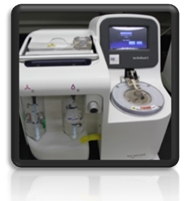Next Generation Sequencing
- Mitochondrial DNA Sequencing

BACKGROUND:
Mitochondrial disorders, including Leber Hereditary Neuropathy (LHON) and Mitochondrial Encephalomyopathies (MELAS, MERRF and NARP) are detected with massively parallel, next generation sequencing of the Mitochondrial DNA. Although DNA-based testing provides highly accurate genotyping, rare diagnostic errors may occur. Examples include misinterpretation because of polymorphisms or rare genetic variants, blood transfusion, mislabeled specimens or erroneous representation of family relationships. Bone marrow transplants from allogenic donors will interfere with testing. Technical Limitation: Sequencing is not a quantitative methodology and cannot reliably detect mosaicism, or heterozygous deletions, duplications and rearrangements larger than 5bp. Rarely polymorphisms present within the primer binding site may cause allele dropout during PCR amplification. Some small sections of a few individual regions may have inherent sequence properties that yield suboptimal data and mutations in those regions may not be reliably identified.
These diseases are all caused by mitochondrial DNA mutations, so a maternal family history of neurological disease is an important clue to diagnosis. Leber Hereditary Optic Neuropathy (LHON) results in optic nerve degeneration with painless progressive loss of central vision in early adulthood (median age of onset is 28 years). MELAS (Mitochondrial Encephalomyopathy, Lactic Acidosis and Stroke like episodes), MERRF (Myoclonic Epilepsy and Ragged Red Fibers) and NARP (Neuropathy, Ataxia and Retinitis Pigmenosum) exhibit some overlapping disease symptoms including exercise intolerance, weakness, sensorineural hearing loss, seizures, ataxia and short stature. Some combinations of findings are specific for each disorder:
- MELAS: stroke like episodes, vomiting, seizures, headache, elevated lactic acid, ragged red fibers seen in muscle biopsy.
- MERRF: myoclonic epilepsy, elevated lactic acid, ragged red fibers
- NARP: sensory neuropathy, developmental delay, pigmentary retinopathy
LHON |
MELAS |
MERRF |
NARP |
||
Maternal family history |
+ |
+ |
+ |
+ |
|
Optic atrophy |
+ |
- |
- |
- |
|
Retinitis pigmentosum |
- |
- |
- |
+ |
|
Myoclonic seizures |
- |
- |
+ |
+ |
|
Ataxia |
- |
- |
+ |
+ |
|
Weakness |
- |
+ |
+ |
+ |
|
Seizures |
- |
+ |
+ |
+ |
|
Dementia |
- |
+ |
+ |
+ |
|
Short Stature |
- |
+ |
+ |
+ |
|
Sensorineural hearing loss |
- |
+ |
+ |
+ |
|
Neuropathy |
- |
+/- |
+/- |
+ |
|
Lactic acidosis |
- |
+ |
+ |
+/- |
|
Ragged red fibers |
- |
+ |
+ |
+ |
|
INDICATIONS FOR TESTING:
- Painless bilateral visual loss is an indication of LHON. The differential diagnosis includes atypical optic neuritis, ischemic optic-neuropathy and amblyopia.
- Any combination of the cardinal symptoms of MELAS, MERRF or NARP.
SAMPLE REQUIREMENTS: |
Blood: 3-5 ml purple top (EDTA) vacutainer of whole blood inverted several times to mix. Forward within 48 hours at room temperature. |
Muscle Biopsy (fresh or frozen): Please contact the laboratory for proper media and shipping conditions.. |
Test Method: Next Generation Sequencing |
Turn around time: 10-15 days |
Report: will include assay results |

 Institute of Genomic Medicine
Institute of Genomic Medicine